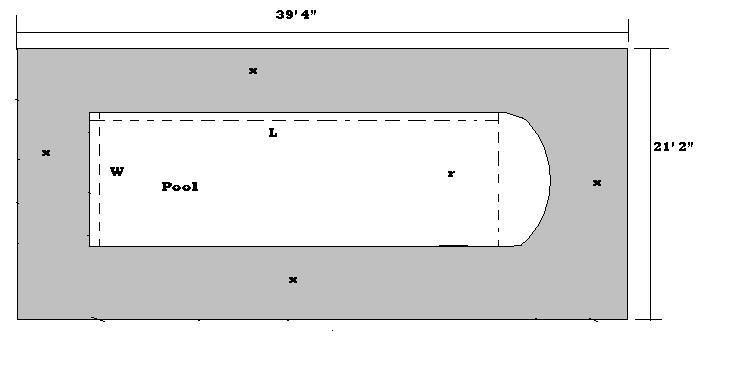yellowmonster572
New member
- Joined
- Sep 12, 2007
- Messages
- 7
Mrs. I. M. Mean has hired you [a tile contractor] to tile a walking area around a small wading pool about to be built at the rear of her house.
The custom tile she has purchased and will use is very expensive, costing $22.00 per square inch. Since the tile is custom, there is no additonal tile available. She has purchased 300 square feet of the tile and requires you to use ALL the tile in the construction of the walkway.
Before the wading pool is built, she asks you to calculate:
-the values of W, L, and r.
-the value of "x" [the walkway width].
I have a sketch of this problem showing that the pool has a semi circular end, causing 'r' to be in the problem.
The length of the area the pool/walkway will be in is 39' 4" and the width is 21' 2".
So far I have
(39.33)(21.17)=(lw+[pi r^2/over2])+300
2x+w=21.17
2x+l+r=39.33
Where do I go from here?
The custom tile she has purchased and will use is very expensive, costing $22.00 per square inch. Since the tile is custom, there is no additonal tile available. She has purchased 300 square feet of the tile and requires you to use ALL the tile in the construction of the walkway.
Before the wading pool is built, she asks you to calculate:
-the values of W, L, and r.
-the value of "x" [the walkway width].
I have a sketch of this problem showing that the pool has a semi circular end, causing 'r' to be in the problem.
The length of the area the pool/walkway will be in is 39' 4" and the width is 21' 2".
So far I have
(39.33)(21.17)=(lw+[pi r^2/over2])+300
2x+w=21.17
2x+l+r=39.33
Where do I go from here?


